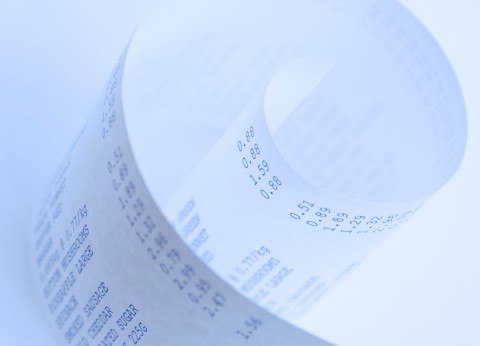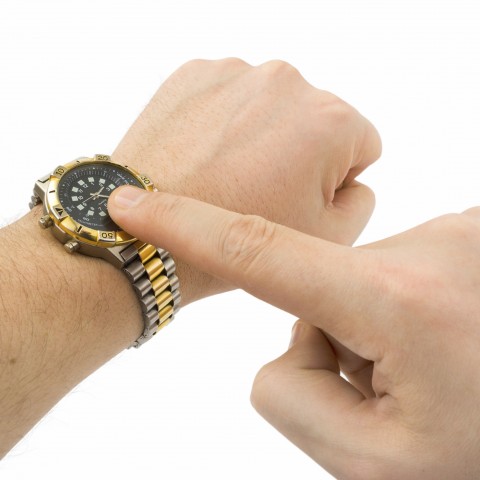Surely you already know how to say a few numbers in Spanish, but have you mastered them? And no, we’re not asking you if you have a PhD in Mathematics.
We’ll probably agree that numbers are an incredibly important part of our lives. Most of us don’t need to do any complicated math on a regular basis, unless that happens to be part of your job description. But we all still use numbers all the time, whether you like them or not. We all look at the clock a few times a day, we go shopping and look at the prices of products…
We all need to count things sometimes as well. We can count our money, or how many cartons of milk we have left, or how many steps there are from the entrance of your house to your room, or maybe how many days there are left until a special occasion.
We don’t need to be experts, but we all need numbers and we all use them. We realize they’re not the most exciting topic when learning a language, but if we all use them when we speak our native language, what makes you think you won’t need them in Spanish?
In today’s article, we’re going to teach you everything you need to know about using numbers in Spanish, including how to count, write, and pronounce Spanish numbers from 1 to 100 and higher!
Table of Contents
- Saying Numbers
- Giving Your Phone Number
- Saying Prices and Shopping
- Telling the Time
- Saying Dates
- Basic Math
- How SpanishPod101.com Can Help You Learn More Spanish
1. Saying Numbers
- Numbers 0-9
Let’s start with the basics. Normally one of the first things you learn in Spanish is how to count from 0 to 10, so you might already know this, but we’ll show it here just in case. (They are, after all, some of the most important numbers in learning Spanish!)
- 0 – cero
- 1 – uno (or un if it’s in front of a noun, because it becomes an article, for example: un perro → “a dog” )
- 2 – dos
- 3 – tres
- 4 – cuatro
- 5 – cinco
- 6 – seis
- 7 – siete
- 8 – ocho
- 9 – nueve
- Numbers 10-99
It’s time to start learning some more numbers. Just so you know, once we reach number 16, numbers start following a clear pattern, even though it might seem confusing at first. This is why first we’ll begin by explaining the hardest one, and then we promise the next numbers will be incredibly easy to understand.
Dieciséis (16) is nothing more than diez y seis (“ten and six”) put together. You might notice it’s not written exactly the same way, but that happens for a reason. Let’s analyze these changes step by step:
- Z → C: The first change is the z we had in the word diez that turns into a c in dieciséis, as well as in the words for the following numbers (diecisiete, dieciocho…). Don’t let this confuse you, you’re better than that. In Spanish, the letter c in front of the vowels e and i has the exact same sound as z (which is like the “th” sound in “thanks”), while every other time it would have a k sound.
Moreover, for other reasons, we don’t use the letter z in front of those two vowels. In this case, what’s the letter that’s after c? That’s right, an i, which means it has the exact same sound as in diez.
- Y → I: The second change is another letter changing and it’s very similar to the previous one. In Spanish, the word for “and” is y, so if we wanted to put these words together, it would look like this: diecyséis.
The combination of the letters c + y is extremely uncommon in Spanish, and in fact, it only exists in a few foreign words such as cyan. That’s why, to make it look more aesthetic, it changes to i.
- E → É: And finally, the last change, is one that we’ll only see in a couple more numbers. The reason for this change is based on the rules of Spanish accents. We won’t get too much into it right now, but basically, one of these rules is that words that end in vowel + s, like this one, that are stressed on the last syllable, always have an accent.
Seis is a short word and only has one syllable, so it doesn’t require one. However, dieciséis is a longer word, so it does need one. Don’t worry too much about it for now; we promise it’s not as hard as it sounds, but now is not the time.
We said this change happens in two more numbers: these are veintitrés (23) and veintiséis (26). It’s for the exact same reason.
Now that we’ve seen the hardest one, let’s look at the rest of the numbers higher than 16. Do you notice that it’s always ten, or twenty, or thirty, followed by y and another number? This is the pattern we were talking about. With tens and twenties, these words are written together like we saw previously and might show a few changes, but once we reach the thirties, they start being written separately, so it becomes a lot clearer.
- 10 – diez
- 11 – once
- 12 – doce
- 13 – trece
- 14 – catorce
- 15 – quince
- 16 – dieciséis
- 17 – diecisiete
- 18 – dieciocho
- 19 – diecinueve
- 20 – veinte
- 21 – veintiuno
- 22 – veintidós
- 23 – veintitrés
- 24 – veinticuatro
- 25 – veinticinco
- 26 – veintiséis
- 30 – treinta
- 31 – treinta y uno
- 32 – treinta y dos
- 33 – treinta y tres
- 40 – cuarenta
- 41 – cuarenta y uno
- 42 – cuarenta y dos
- 50 – cincuenta
- 60 – sesenta
- 70 – setenta
- 80 – ochenta
- 90 – noventa
- Numbers up to 1000
There are a few things you need to be careful with:
- Notice that 100 is cien, but in every other number that follows it changes to ciento and it’s followed by the next number. For example, 101 is ciento uno and 187 would be ciento ochenta y siete.
- Unlike in English, hundreds are written in one word. For example, doscientos (one word) = “two hundred” (two words). However, what follows it does work like in English: a space, and then the next number, in the same way it would normally be written. For example, “eight hundred forty-two” would be ochocientos cuarenta y dos in Spanish.
- In English, the word “hundred” doesn’t change, whether it’s one-hundred, two-hundred, or four-hundred. This does change a little bit in Spanish: if it’s, for example, 156, we’ll say ciento cincuenta y seis, but if it’s 470, we’ll say cuatrocientos setenta. Do you see what we’re talking about? Instead of ciento, when it’s more than one hundred, we add the letter s at the end to make it plural, so it will be cientos.
- Sometimes, the number in front of cientos will be the exact same word we learned in the beginning, such as cuatrocientos (400) or ochocientos (800), but there are others that are a bit irregular. These are setecientos (700) and novecientos (900), that don’t exactly use the words siete (7) and nueve (9). The most different one is quinientos (500), which sounds completely different than cinco (5) and doesn’t even end with cientos. It’s a special one, sorry about that.
- The words for hundreds can be masculine or feminine, depending on the noun they’re modifying. For example, if we’re talking about 300 T-shirts, because that’s a feminine word in Spanish, we would say trescientas camisetas, but if we’re talking about 300 dishes, we’ll say trescientos platos. If you’re just counting, because the number isn’t related to any noun, you don’t need to worry about its gender.
Now that we know all this, let’s take a look at the list:
- 100 – cien
- 101 – ciento uno
- 102 – ciento dos
- 103 – ciento tres
- 110 – ciento diez
- 111 – ciento once
- 135 – ciento treinta y cinco
- 200 – doscientos
- 201 – doscientos uno
- 202 – doscientos dos
- 300 – trescientos
- 400 – cuatrocientos
- 500 – quinientos
- 600 – seiscientos
- 700 – setecientos
- 800 – ochocientos
- 900 – novecientos
- 1,000 – mil
- Thousands and millions
Did you think learning numbers up to 1,000 wasn’t enough? We got you covered. If, on the other hand, you think this is too much for you, don’t worry. Come back when you’re ready.
However, thousands and millions happen to be easier than hundreds, because in this case they do work exactly like in English: number + mil (“thousand”) or millón (“million”).
There’s only one thing you need to keep in mind for now: In Spanish, big numbers are broken up with dots, instead of commas. In the list of numbers below we’ll use the English standard so there’s no confusion, but for example, 2,345,392,203 in Spanish would be written 2.345.392.203.
- 2,000 – dos mil
- 2,001 – dos mil uno
- 2,018 – dos mil dieciocho
- 2,245 – dos mil doscientos cuarenta y cinco
- 3,000 – tres mil
- 10,000 – diez mil
- 20,000 – veinte mil
- 44,100 – cuarenta y cuatro mil cien
- 1,000,000 – un millón (Note that here we do need the word un in front of millón)
- 2,000,000 – dos millones
- 4,023,150 – cuatro millones veintitrés mil ciento cincuenta
We could keep going, but we won’t, because we need to tell you something more important. We apologize in advance, because this might be confusing, but unfortunately, an American “one billion” isn’t equivalent to a Spanish un billón. Yes, we mean exactly what you just read. Let’s be a little bit more specific:
- 1,000,000,000 = mil millones or un millardo = “one billion”
- 1,000,000,000,000 = un billón = “one trillion”
We’re sure you’re already hoping you never have to refer to these numbers in Spanish, but here’s a specific example: in English, you would say that in the world there are over 7-billion people. However, in Spanish, you would have to say there are over siete mil millones.
- Ordinal Numbers
When it comes to ordinal numbers, writing abbreviations is really easy, because they don’t change from number to number like they do in English. All you need to do is write whatever number you need followed by o if it refers to something or someone masculine, or a if it has a feminine reference.
For example, in an address, if you want to express that you live on the third floor, in the second apartment, you would need to write: 3o 2a. The first one refers to el piso (“floor”) and the second one to la casa (“house,” but it refers to the apartment).
- 1st – primero / primera
- 2nd – segundo / segunda
- 3rd – tercero / tercera
- 4th – cuarto / cuarta
- 5th – quinto / quinta
- 6th – sexto / sexto
- 7th – séptimo / séptima
- 8th – octavo / octava
- 9th – noveno / novena
- 10th – décimo / décima
Following the previous example, 3o 2a would be spelled tercero segunda.
2. Giving Your Phone Number
When giving a phone number in Spanish, there are a few different ways you can express these numbers. This shouldn’t come as a surprise, because we’re sure it happens in most languages. You can say them number by number, or two numbers at a time, or three. Because we’re only getting started here, we recommend saying it number by number.
Example:
A: ¿Me puedes dar tu número de teléfono?
B: Claro. Mi número es 612 934 213 (seis uno dos, nueve tres cuatro, dos uno tres).
Translation:
A: “Could you give me your phone number?”
B: “Of course. My number is 612 934 213.”
3. Saying Prices and Shopping
In Spanish, decimal numbers are expressed with a comma instead of a dot, so we wouldn’t write or pronounce 2.7 (two point seven), but 2,7 (dos coma siete: “two comma seven”). In prices, even though we write it, we generally don’t pronounce the word coma.
When shopping in Spain, remember that our currency is euros, like in most European countries. You might notice in the following examples that we always place the € symbol after the number. In the examples below we’ve also expressed two different ways of saying numbers in prices, and they are both equally correct.
Between euros and cents it’s optional to say con, which means “with.” To give you a literal translation in English, it would be, for example, “two euros with fifty [cents]).” Moreover, you have the option of indicating the name of the currency, which in this case is euros, or just ignoring it.
The same thing goes for the word for “cents,” which is céntimos. Pay attention to the examples. In bold, we’ve marked all the optional words.
Example:
A: Disculpa, ¿cuánto cuesta esta libreta?
B: Cuesta 1,50 € (uno [con] cincuenta or un euro [con] cincuenta [céntimos]).
Translation:
A: “Excuse me, how much does this notebook cost?”
B: “It costs €1.50.”
Example:
A: ¿Cuánto es?
B: Son 56,78 € (cincuenta y seis [con] setenta y ocho or cincuenta y seis euros [con] setenta y ocho [céntimos]).
Translation:
A: “How much is it?”
B: “It’s €56.78.”
4. Telling the Time
There are a few noticeable differences between telling the time in Spanish and in English. For example, you’ll probably find that in the following list, all phrases begin with la or las. In case you don’t know that yet, la is an article that means “the.” To be a little more specific, it’s a feminine article. It’s not that time is feminine or anything, even though the word hora, which means “time,” is feminine, but when we need to say what time it is in Spanish, we’ll always use a feminine article.
Because Spanish is a pro-drop language (which means we tend to not use the subject when speaking), we don’t need to start the sentence with a pronoun like in English (“It’s half past five”). We can start with the verb ser in its right conjugation (don’t be scared, it’s actually easy) or directly with the article we just mentioned, followed by the time.
| 1:00 → La una [en punto] One o’clock |
2:00 → Las dos [en punto] Two o’clock |
10:05 → Las diez y cinco Five past ten |
| 2:10 → Las dos y diez Ten past two |
7:15 → Las siete y cuarto Quarter past seven |
4:30 → Las cuatro y media Half past four |
| 7:45 → Las ocho menos cuarto Quarter to eight |
11:53 → Las doce menos siete Seven to twelve |
2:55 → Las tres menos cinco Five to three |
Example:
A: ¿Qué hora es?
B: (Son) las dos menos cuarto.
Translation:
A: “What time is it?”
B: “It’s a quarter to two.”
If you want to learn more about telling the time, check out our How to Tell Time in Spanish video lesson.
5. Saying Dates
Notice that in Spanish, just like in most languages (and unlike in American English), we express first the day and then the month. Another difference is that we don’t normally use ordinal numbers, even though it’s still an option; if we want to refer to April 3, we will say tres de abril instead of tercero de abril.
As you might have already realized and as we’ll see in the following examples, months and days of the week in Spanish aren’t spelled in capital letters like they are in English. If you don’t know months in Spanish yet, you can find them in our vocabulary list Talking about Months in Spanish, and for other vocabulary related to the days of the week, Talking about Days.
Example:
A: ¿Qué día es hoy?
B: (Es) miércoles dos de mayo.
Translation:
A: “What day is it today?”
B: “It’s Wednesday, May the 2nd.”
Example:
A: ¿Cuándo es tu cumpleaños?
B: (Es) el dieciséis de noviembre.
Translation:
A: “When is your birthday?”
B: “It’s on November the 16th.”
6. Basic Math
Luckily, these things don’t change from language to language. Could you imagine if sums were different in other languages? That would be chaos. The only thing that changes is the way we express them, both the calculation and the result.
1- Sumas
Example:
2 + 3 = 5
Dos más tres son cinco
“Two plus three is five”
Translation:
Dos más tres es igual a cinco
“Two plus three is equal to five”
2- Restas
Example:
10 – 4 = 6
Diez menos cuatro son seis
“Ten minus four is six”
Translation:
Diez menos cuatro es igual a seis
“Ten minus four is equal to six”
If you happen to be a big Math fan and you’re interested in learning some more Math in Spanish, check out our Top 10 Must Know Math Words in Spanish video lesson.
7. How SpanishPod101.com Can Help You Learn More Spanish
In your language-learning, Spanish numbers are one of the most important topics you’ll need to learn and memorize. Aside from counting and other uses we mentioned above, you can even use Spanish numbers to learn Spanish pronunciation.
Now that you know all numbers in Spanish and how to use them in the most common situations, you’re not going to stop there, right? There’s so much more you can learn at SpanishPod101.com, if you give us a chance. Check out our lessons, podcasts, articles, and vocabulary lists to learn everything you need and more to become fluent in Spanish, the second-most natively spoken language, after Chinese.
If you’re interested in learning even more numbers, check out our list of Spanish Numbers. Numbers are the same in Spain and Mexico and only show differences in pronunciation, so feel free to take a look at that list even if you’re learning Spanish from Spain.
















